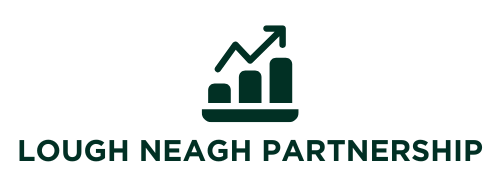Table of Contents
ToggleNavigating the world of personal finance can feel like trying to assemble IKEA furniture without the instructions—confusing and possibly leading to a few regrettable decisions. But fear not! With the right tips, anyone can transform their financial chaos into a well-organized masterpiece.
Understanding Personal Finance
Understanding personal finance is crucial for achieving financial stability. A solid grasp of money management empowers individuals to make informed decisions about savings, investments, and spending.
Importance of Financial Literacy
Financial literacy serves as the foundation for effective money management. Knowledge of budgeting, saving, and investing leads to better financial decisions. Individuals skilled in financial literacy can navigate economic uncertainties and avoid debt traps. This skill also enhances the ability to create a long-term financial plan that accommodates personal goals. Studies reveal that higher financial literacy correlates with increased savings rates and investment participation, benefiting individuals’ overall economic well-being.
Common Personal Finance Mistakes
Many individuals make common mistakes that hinder their financial success. Overspending on non-essential items often leads to a lack of savings. Failing to create a budget can result in overspending and unforeseen debt. Additionally, neglecting to build an emergency fund leaves individuals vulnerable to financial shocks. Some people also overlook the importance of retirement savings, delaying critical investments that benefit them in the long run. Understanding these pitfalls can help prevent financial missteps and encourage more effective money management strategies.
Budgeting Techniques
Budgeting serves as a crucial tool for managing personal finances, fostering better financial decisions. Understanding effective budgeting techniques can help achieve financial stability and eliminate common pitfalls.
Creating a Realistic Budget
Establishing a realistic budget entails assessing income and expenses accurately. Track monthly income sources such as salaries and side hustles. Review fixed expenses including rent or mortgage payments, utilities, and insurance. Evaluate variable expenses, like groceries or entertainment costs. Allocate funds for savings, ideally setting aside at least 20% of net income. Adjust the budget as necessary to adapt to lifestyle changes or unexpected expenses.
Tools and Apps for Budgeting
Numerous tools and apps simplify budgeting and enhance financial management. Consider using Mint, which aggregates accounts and categorizes spending effortlessly. Explore YNAB (You Need A Budget) that encourages proactive budgeting to allocate every dollar effectively. Another option, PocketGuard, provides insights into spending habits while ensuring users maintain enough for upcoming bills. Numerous resources exist, each offering unique features tailored to different budgeting styles. Select an option that aligns with personal financial goals and preferences.
Saving Strategies
Effective saving strategies form the backbone of personal finance management. Implementing specific techniques improves financial stability and prepares individuals for unexpected expenses.
Setting Savings Goals
Setting savings goals involves defining clear, achievable targets. Establishing a realistic timeline for each goal aids motivation and progress tracking. Prioritize short-term goals, like saving for a vacation, alongside long-term ambitions, such as retirement savings. Specificity matters; for instance, saving $5,000 for a new car within two years encourages a focused approach. Frequent reviews of goals allow for adjustments based on changing financial circumstances. Regularly evaluating progress keeps individuals accountable and motivated.
Emergency Fund Essentials
An emergency fund acts as a financial safety net against unexpected expenses. Experts recommend saving three to six months’ worth of living expenses. Establishing this fund first enables easier navigation through financial crises. Begin by automating monthly contributions to foster consistent savings habits. Smaller, manageable amounts can build toward larger goals over time. Positioning this fund in a high-yield savings account enhances growth potential while ensuring accessibility. Prioritizing the emergency fund strengthens overall financial preparedness.
Investing Basics
Investing serves as a critical aspect of personal finance that helps individuals build wealth over time. Understanding the foundational elements can simplify the investment process.
Types of Investments
Various investment categories exist, including stocks, bonds, mutual funds, and real estate. Stocks represent ownership in companies and often provide long-term growth potential. Bonds, on the other hand, are loans to governments or corporations that typically yield fixed interest over time. Mutual funds pool investors’ money to invest across a diversified portfolio of assets, reducing individual risk. Real estate involves purchasing property, which can generate rental income and appreciate in value. Choosing the right type of investment depends on personal financial goals, risk tolerance, and time horizon.
Risk Tolerance Assessment
Assessing risk tolerance is essential for making informed investment decisions. Individuals must consider factors like age, income, financial goals, and investment experience. Younger investors often can withstand higher risk due to longer time horizons, while those approaching retirement may prefer conservative investments. Various online questionnaires can aid in evaluating risk tolerance, providing insights into appropriate asset allocation. Balancing high-risk investments, which may offer higher returns, with low-risk options, which provide stability, creates a well-rounded investment strategy that aligns with personal comfort levels.
Managing Debt Effectively
Managing debt requires a clear understanding of its implications and strategic actions. Individuals can navigate the landscape of debt by distinguishing between good and bad debt, utilizing effective repayment strategies, and maintaining awareness of their financial positions.
Understanding Good vs. Bad Debt
Good debt often involves borrowing for investments that create value, like a mortgage or student loans. These debts generally lead to asset appreciation or increased earning potential. Bad debt, in contrast, typically includes high-interest credit card balances or loans for non-essential purchases. Such debts hinder financial stability and can spiral out of control. A clear grasp of these two categories aids in making informed borrowing decisions that support long-term financial health.
Strategies for Debt Repayment
Effective debt repayment strategies enhance financial management. Prioritizing debts can help individuals tackle high-interest loans first. Utilizing the debt snowball method allows for focusing on smaller debts to gain motivation from quick wins. Setting up automatic payments prevents missed due dates and late fees. Additionally, consolidating debt through lower interest loans can streamline repayment efforts. Regularly reviewing progress ensures individuals stay on track and adapt strategies as needed. With diligence, achieving debt-free status becomes a tangible goal.
Mastering personal finance is a journey that requires patience and commitment. By implementing effective budgeting techniques and understanding the importance of saving and investing, individuals can build a solid financial foundation. Recognizing common pitfalls and managing debt strategically further empowers them to navigate their financial landscape with confidence.
Staying informed and proactive about financial choices will make a significant difference in achieving long-term stability. With the right tools and knowledge, anyone can turn their financial goals into reality. Embracing these principles will not only enhance financial literacy but also pave the way for a secure and prosperous future.








